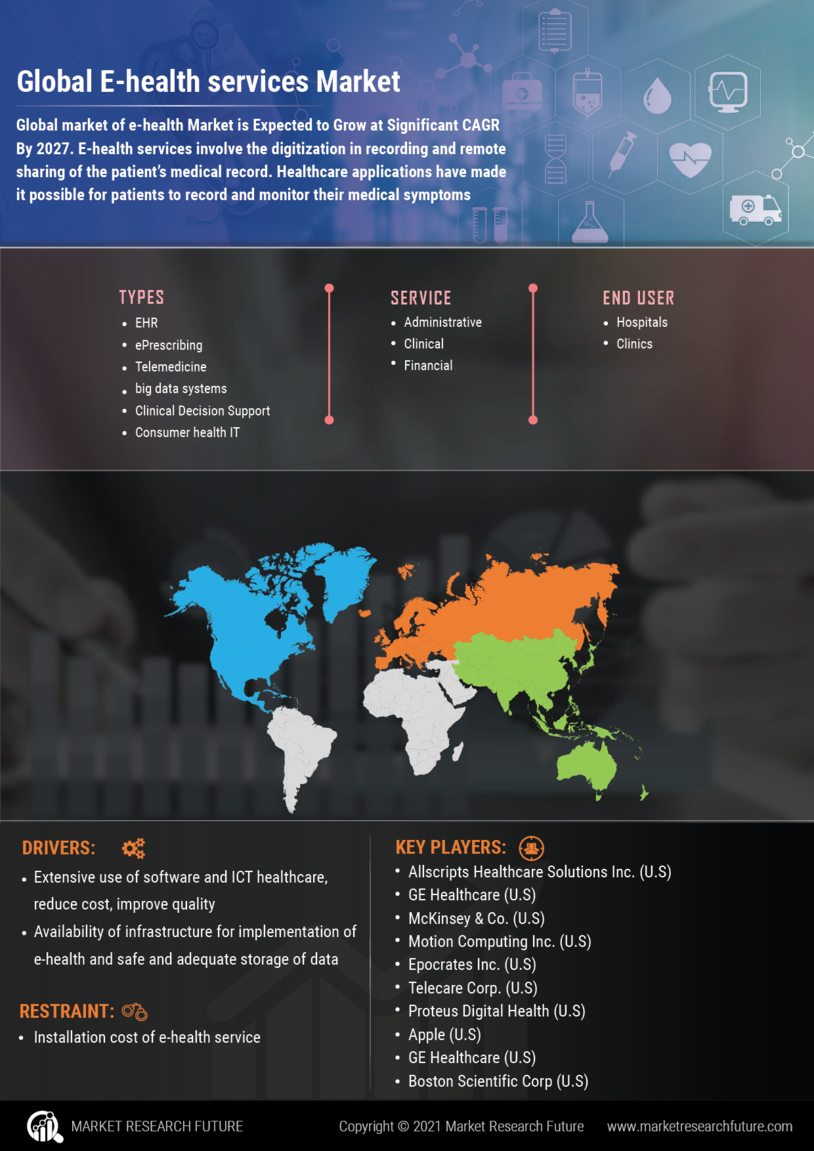E-Health Services Market Summary
As per MRFR analysis, the EHealth Services Market Size was estimated at 12.54 USD Billion in 2024. The EHealth Services industry is projected to grow from 14.88 USD Billion in 2025 to 82.78 USD Billion by 2035, exhibiting a compound annual growth rate (CAGR) of 18.72 during the forecast period 2025 - 2035.
Key Market Trends & Highlights
The EHealth Services Market is experiencing robust growth driven by technological advancements and increasing demand for remote healthcare solutions.
- Telemedicine adoption is surging, particularly in the Asia-Pacific region, as patients seek convenient healthcare access.
- The integration of AI technologies is transforming both clinical and administrative processes, enhancing efficiency and patient outcomes.
- Preventive care is gaining traction, with a notable emphasis on chronic disease management across North America.
- Rising demand for remote healthcare and regulatory support for EHealth solutions are key drivers propelling market expansion.
Market Size & Forecast
| 2024 Market Size | 12.54 (USD Billion) |
| 2035 Market Size | 82.78 (USD Billion) |
| CAGR (2025 - 2035) | 18.72% |
Major Players
Teladoc Health (US), Amwell (US), Cerner Corporation (US), Allscripts Healthcare Solutions (US), McKesson Corporation (US), Epic Systems Corporation (US), Siemens Healthineers (DE), Philips Healthcare (NL), Medtronic (US), GE Healthcare (US)


















Leave a Comment